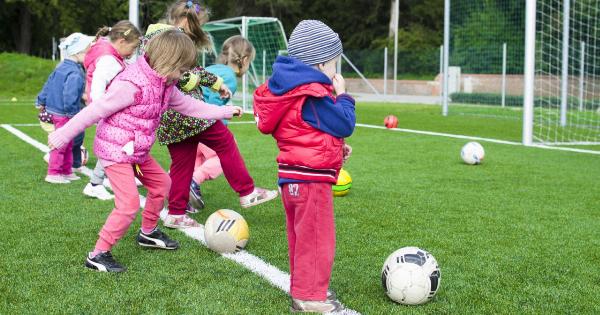Children diagnosed with ADHD (Attention Deficit Hyperactivity Disorder) often struggle with impulsivity, hyperactivity, and difficulty in paying attention.
This neurodevelopmental disorder affects millions of children worldwide and can significantly impact their daily lives. While medication and therapy are commonly used to manage symptoms, research suggests that exercise can be a valuable treatment option. In fact, regular physical activity has been found to have numerous positive effects on hyperactive children.
Here, we explore how exercise can benefit children with ADHD and enhance their overall well-being.
Improved Focus and Attention
Engaging in physical activities has shown to enhance the cognitive functions of children with ADHD.
Exercise releases chemicals in the brain, such as dopamine, norepinephrine, and serotonin, which play a crucial role in attention, concentration, and focus. A study conducted by Dr. Alan Smith and his team at Michigan State University found that just 20 minutes of moderate exercise before attempting a mental task significantly improved focus and attention in children with ADHD.
This improvement in cognitive performance can have profound effects on a child’s ability to learn and succeed academically.
Reduced Hyperactivity and Impulsivity
Hyperactivity and impulsivity are hallmark symptoms of ADHD, often causing significant disruption in a hyperactive child’s life. Regular exercise provides an outlet for excessive energy and can help reduce hyperactivity.
Physical activities, such as running, swimming, and biking, allow children with ADHD to channel their energy into productive and controlled movements. Furthermore, exercise has been found to increase self-regulation skills, enabling children to better control their impulsive behaviors.
This reduction in hyperactivity and impulsivity can lead to improved social interactions and a decreased risk of accidents or injuries.
Enhanced Mood and Self-esteem
Children with ADHD often face challenges in managing their emotions, leading to frequent mood swings, irritability, and low self-esteem. Exercise has been shown to have a significant positive impact on emotional well-being.
When engaged in physical activities, the brain releases endorphins, which are known as “feel-good” neurotransmitters. These endorphins help improve mood and reduce stress and anxiety levels. Additionally, participating in team sports or group exercises can enhance social interaction, boost self-esteem, and provide a sense of belonging.
As a result, hyperactive children who engage in regular exercise often experience improved emotional stability and higher self-confidence.
Better Sleep Quality
Sleep disturbances are commonly reported in children with ADHD. Difficulties in falling asleep and maintaining a regular sleep schedule can further exacerbate the symptoms of hyperactivity and inattention.
However, exercise has been found to positively impact the quality and duration of sleep. Engaging in physical activities during the day helps regulate the body’s natural sleep-wake cycle, known as the circadian rhythm.
Moreover, the physical exertion associated with exercise can promote better sleep by reducing restlessness and increasing feelings of tiredness. By improving sleep quality and quantity, regular exercise can alleviate some of the symptoms associated with ADHD and contribute to overall better daytime functioning.
Improved Executive Functioning
Executive functioning refers to a set of cognitive processes responsible for planning, organizing, problem-solving, and self-monitoring. Children with ADHD often struggle in these areas, impacting their academic performance and daily activities.
Engaging in physical activities has shown to boost executive functioning skills in children with ADHD. Research conducted by Dr. Betsy Hoza and her colleagues at the University of Vermont found that 30 minutes of daily exercise significantly improved executive functioning in children with ADHD.
The mechanism behind this improvement is believed to be the increased blood flow and oxygenation to the brain during exercise, which enhances neural connections and cognitive abilities.
Improved Academic Performance
Given the positive impact of exercise on cognitive functioning, it is not surprising that regular physical activity can lead to improved academic performance in hyperactive children.
The increased focus, attention, and executive functioning gained from exercise can help children with ADHD better engage in classrooms, sustain concentration on tasks, and retain information. Studies have shown that students who participate in physical activities regularly demonstrate enhanced problem-solving abilities, improved memory retention, and higher academic achievement compared to their sedentary counterparts.
By incorporating exercise into a child’s routine, parents and educators can provide them with the necessary tools to succeed academically.
Reduced Anxiety and Depression Symptoms
Anxiety and depression are common comorbidities seen in children and adolescents with ADHD. These mental health conditions can further impair a hyperactive child’s ability to function and lead to long-term negative consequences.
Exercise has been found to be a natural and effective way to reduce anxiety and depressive symptoms. Physical activity increases the production of neurotransmitters like serotonin, which helps regulate mood and minimize feelings of anxiety and sadness.
Additionally, exercise provides a distraction from negative thoughts, promotes relaxation, and fosters a sense of accomplishment. Incorporating regular exercise into the routine of hyperactive children can offer them a natural strategy to manage their anxiety and depression symptoms.
Improved Social Skills
Children with ADHD often struggle with social interactions, leading to difficulties making friends and maintaining relationships. Engaging in team sports and other group exercises can improve social skills in hyperactive children.
By participating in physical activities together, children learn to communicate, cooperate, and work towards a common goal as a team. They develop important skills like taking turns, following rules, and sharing responsibilities.
Additionally, being part of a sports team or exercise group provides hyperactive children with a sense of belonging and acceptance, reducing feelings of social isolation. The improved social skills gained through exercise can help hyperactive children build stronger relationships and establish a supportive social network.
Enhanced Overall Physical Health
Regular exercise not only benefits a hyperactive child’s mental and emotional well-being but also contributes to their overall physical health. Physical activities help improve cardiovascular health, muscular strength, and endurance.
Engaging in exercise can reduce the risk of obesity, which is often higher in children with ADHD. Moreover, exercise supports healthy bone development, improves coordination and motor skills, and enhances body awareness.
By focusing on physical health through exercise, parents can instill lifelong habits and promote general well-being in their hyperactive children.
Increased Neuroplasticity
Neuroplasticity refers to the brain’s ability to adapt and change throughout life by forming new neural connections. Children with ADHD often have impaired neural networks and difficulties in certain cognitive functions.
Exercise has been found to increase neuroplasticity, particularly in brain areas associated with attention and inhibition control. A study conducted by Dr. John J. Ratey, an associate clinical professor of psychiatry at Harvard Medical School, demonstrated that exercise stimulates the growth of new brain cells and enhances neural connections in individuals with ADHD.
By promoting neuroplasticity, exercise offers the potential for long-term improvements in cognitive functioning and symptom management.
Conclusion
The positive effects of exercise on hyperactive children are undeniable.
Regular physical activity has been shown to improve focus and attention, reduce hyperactivity and impulsivity, enhance mood and self-esteem, promote better sleep, boost executive functioning, improve academic performance, reduce anxiety and depression symptoms, enhance social skills, contribute to overall physical health, increase neuroplasticity, and more. Engaging in exercise should be seen as an empowering and natural intervention for children with ADHD.
By incorporating exercise into their daily routines, parents and educators can help hyperactive children better navigate their challenges, unleash their potential, and lead happier and healthier lives.






























